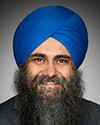Thank you very much.
Thank you for inviting us to appear before the committee this morning.
It is a pleasure to be here this morning to talk about this important issue. I just want to tell you a few things about the CWTA. We've given you a copy of our slide deck so you can follow.
The CWTA is the Canadian Wireless Telecommunications Association, and it is the authority on wireless telecommunications issues in Canada. The association represents over 180 wireless service providers, equipment manufacturers, and other suppliers in Canada. We champion the interests of over 23 million Canadians who use wireless services for convenience, productivity, business, and safety. We bring together the industry on key social issues, such as the enhanced 911 service, Mobile Giving Canada, our code of conduct, wireless number portability, Recycle My Cell--which is our national recycling program--and TextEd.ca.
Wireless is an essential part of our lives. The industry itself is responsible and proactive. We make our communities safer. We help our families and friends stay connected. We enhance our cultural and social lives. Wireless also creates new jobs and opportunities, increases business productivity and competitiveness, and generates new investments.
The wireless industry in Canada is fully compliant with the rules and regulations that are set by the Government of Canada. The wireless industry is in full compliance with the federal government's electromagnetic field, or EMF, emissions safety standards, standards, which are followed scrupulously. EMF emissions of cellular phones and antennas are strictly regulated by Industry Canada, based on Health Canada's Safety Code 6. The wireless industry fully complies with these regulations.
Health effect studies of EMFs have been ongoing for decades. To date there is no convincing scientific evidence of adverse health effects from exposures to EMF at levels below the limits outlined in Health Canada's Safety Code 6. Again, for exposure below the safety limits set by the science-based EMF exposure standards, including Health Canada's Safety Code 6, no adverse effects have been proven through credible, peer-reviewed, scientific evidence. The wireless industry does not set the standard. I want to be clear on this point. Industry Canada enforces these standards based on Health Canada's Safety Code 6.
So it is clear that the Canadian industry adheres to the standards set by the Canadian government.
There have been studies ongoing about the potential impacts of EMF. For instance, the Institute of Cancer Epidemiology of the Danish Cancer Society in Copenhagen tracked 16 million people over a 30-year span in Denmark, Sweden, Finland, and Norway. This is an important study, because it tracks the rate of brain tumours over a prolonged period of time.
This a quote from their report:
Our finding that brain tumor incidence rates were either stable, decreased, or continued a gradual increase that started before the introduction of mobile phones is consistent with mobile phone use having no observable effect on brain tumor incidence in this period.
This is their own conclusion.
As well,
Although mobile phone use has frequently been proposed as a risk factor for brain tumors, neither a biological mechanism to explain this association nor the etiology of brain tumors is known. Mobile phone use in Denmark, Finland, Norway, and Sweden increased sharply in the mid-1990s.
This was another conclusion from their report.
There are questionable conclusions from questionable studies. The health committee's study of wireless safety should be guided by actual science and not by unsupported conjecture.
We firmly believe it is essential to establish public policies that are in everyone's best interests. The Government of Canada and the committee examining these issues must base their decisions on the tested and peer-reviewed science.
There are some reports, such as the BioInitiative Report that purport to demonstrate adverse effects. However, the findings in this report are not supported by the vast majority of other scientific studies on this topic around the world. The conclusions drawn by the authors of the BioInitiative Report are not representative of the massive body of evidence emanating from the international scientific community.
Here's a quote:
The opinions expressed by the authors of the BioInitiative report are not consistent with the conclusions drawn from the broader base of scientific literature reviewed by Health Canada or a large number of other national and international standards bodies....
This was a response by the Minister of Health to a question in November 2008.
As well, the minister went on to say:
Health Canada's Safety Code 6 takes into account all possible biological and/or health effects of radiofrequency (RF) fields, including short-term heating effects, non-thermal effects and/or long- term effects. While some European municipalities have adopted more stringent limits, these recommendations are based upon socio-political considerations.
Further, the minister also went on to say:
It is true that there are some “outlier” reports and some scientists which express a “minority” opinion with respect to the safety of low-level RF field exposures. However, it is important to point out that the vast majority of studies and scientists in this field do not consider low-level RF field exposures...to cause any adverse health effects. There are numerous scientific reviews on this issue by independent scientists and by government institutions around the world which share this scientific consensus.
This was also a response by the Minister of Health in May 2008.
Other governments around the world have provided reactions to the BioInitiative Report. The European Commission says that the report is “written in an alarmist and emotive language and whose arguments have no scientific support from well-conducted EMF research”.
In Australia they said about the BioInitiative Report that, “As it stands it merely provides a set of views that are not consistent with the consensus of science, and it does not provide an analysis that is rigorous enough to raise doubts about the scientific consensus.”
And we can go to the Netherlands and their conclusion, that the BioInitiative Report “is not an objective and balanced reflection of the current state of scientific knowledge”.
Or we can go to Germany:
The BfS [German Federal Office for Radiation Protection] conducted a preliminary review of the so-called “BioInitiative Report” immediately after its release and concluded that it had clear scientific shortcomings. In particular, it has undertaken to combine the health effects of low- and high-frequency fields that are not technically possible. The overwhelming majority of studies underpinning the report are not new: they already have been taken into account in the determination of currently applicable standards.
In conclusion, the Canadian wireless industry will continue to be responsible by adhering to the safety standards enforced by the Government of Canada, guidelines that are based on actual science, not unsupported conjecture, and that reflect international standards as well. Safety Code 6 is a product of international standards that take into account all of the credible scientific literature available.
The scientific research overwhelmingly demonstrates that wireless technologies are safe.
Thank you. Merci.










